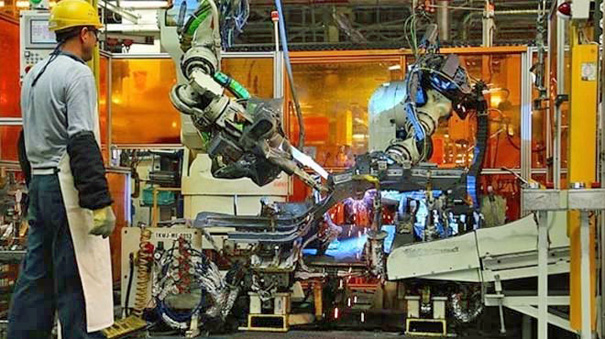Fear of Automation Could be Affecting Workers Health
![]() Print this Article | Send to Colleague
Print this Article | Send to Colleague
The fear that a robot or computer could put workers in the unemployment line may be directly linked to some physical and mental health issues, says three Ball State University researchers and a Villanova University professor.
County-level job automation risk and health: Evidence from the United States, published in the journal Social Science and Medicine, found that exposure to automation risk may be negatively associated with health outcomes, plausibly through perceptions of poorer job security.
The research was conducted by: Srikant Devaraj, a research assistant professor with Ball State’s Center for Business and Economic Research (CBER); Michael Hicks, CBER director; Emily J. Wornell, a research assistant professor with Ball State’s Indiana Communities Institute; and Pankaj C. Patel with Villanova University.

"While estimates of potential job losses due to automation vary for our nation— with one as high as 47%—most people agree that the risk of automation is significant and growing," said Hicks, who found in 2015 that job losses in the nation’s manufacturing sectors due to automation were as high as 88% in recent years. "People who live and work in areas where automation is taking place are sickened by the thought of losing their jobs and having no way of providing for themselves or their families."
In this study, researchers found that a 10-percentage-point increase in automation risk at the county-level worsens general, physical, and mental health by 2.38 percentage points, 0.8 percentage point, and 0.6 percentage point, respectively.
Further, the study estimates that the 10-percentage point increase in automation risk increases overall costs by $24 million to $174 million due to increase in prevalence of poor or fair health, $6 million to $40 million due to increased physical distress, and $7 to $47 million due to increased mental distress.
The study also found that the Southern region of the U.S. appears to have a higher percentage of people with worse health from exposure to automation risk. The Plains, the Midwest, and the New England regions have better health outcomes. However, there is significant heterogeneity in health outcomes across the Rocky Mountain and Southwest regions. These patterns are consistent with general health patterns in the nation—health conditions are worse in the Southern U.S. and positive in the Plains, Midwest, New England, and the West Coast.
Given these consistencies, historic regional effects could be strengthening the influence of automation risk on health outcomes, researchers found.
"The actual and felt threats from automation may not immediately manifest into morbidities, but the increasing prevalence of poorer self-reported health and feelings of deteriorating physical and mental health can have a direct and lasting impact on individuals, families, and communities," Hicks said. "While we cannot fully unpack the black box between county-level automation risk and health, nevertheless, it is important for policymakers to understand the health effects of automation risk."
Contact information: Hicks—765-716-3625 or mhicks@bsu.edu; Wornell—765-285-1613 or ejwornell@bsu.edu; Devaraj—765-285-4304 or sdevaraj@bsu.edu.


